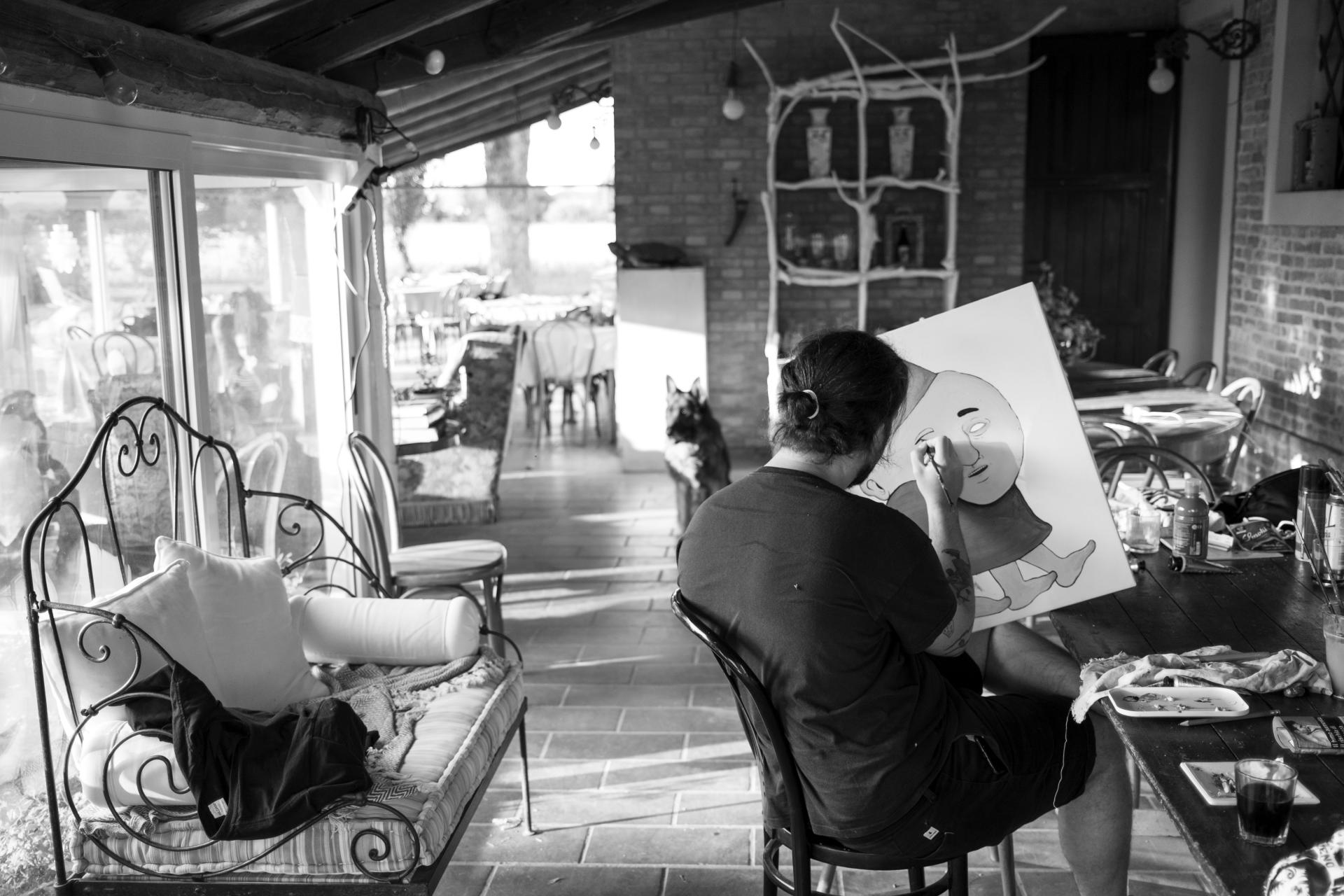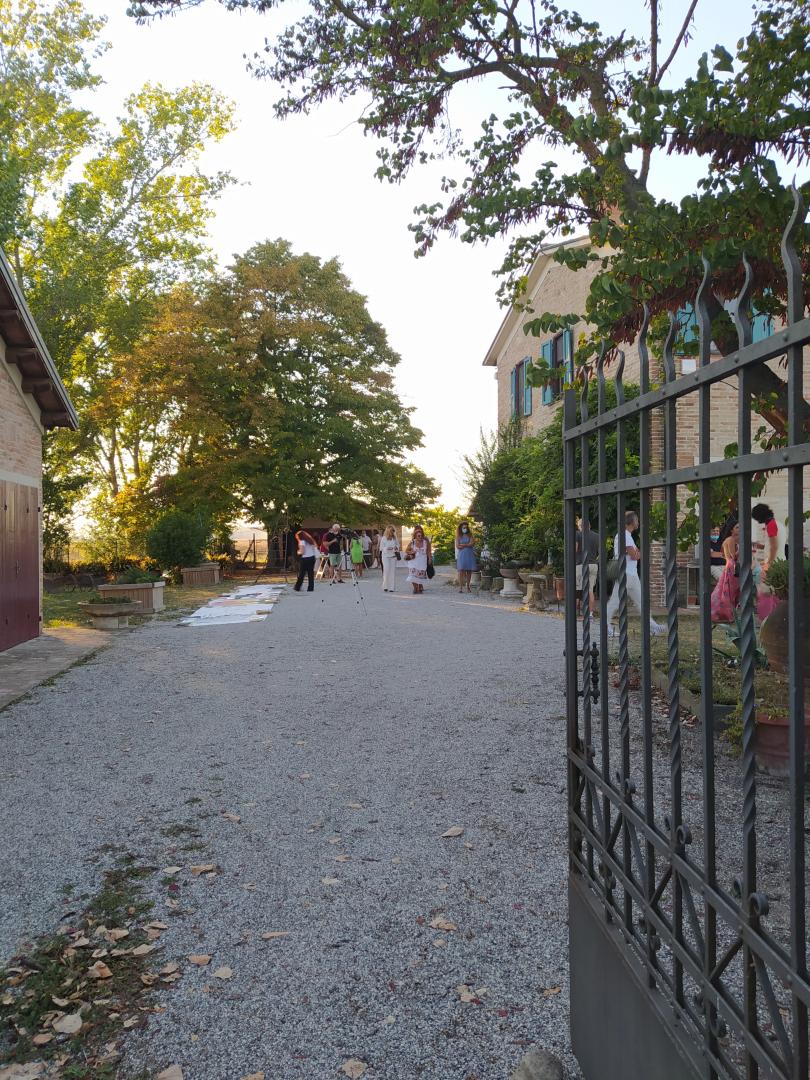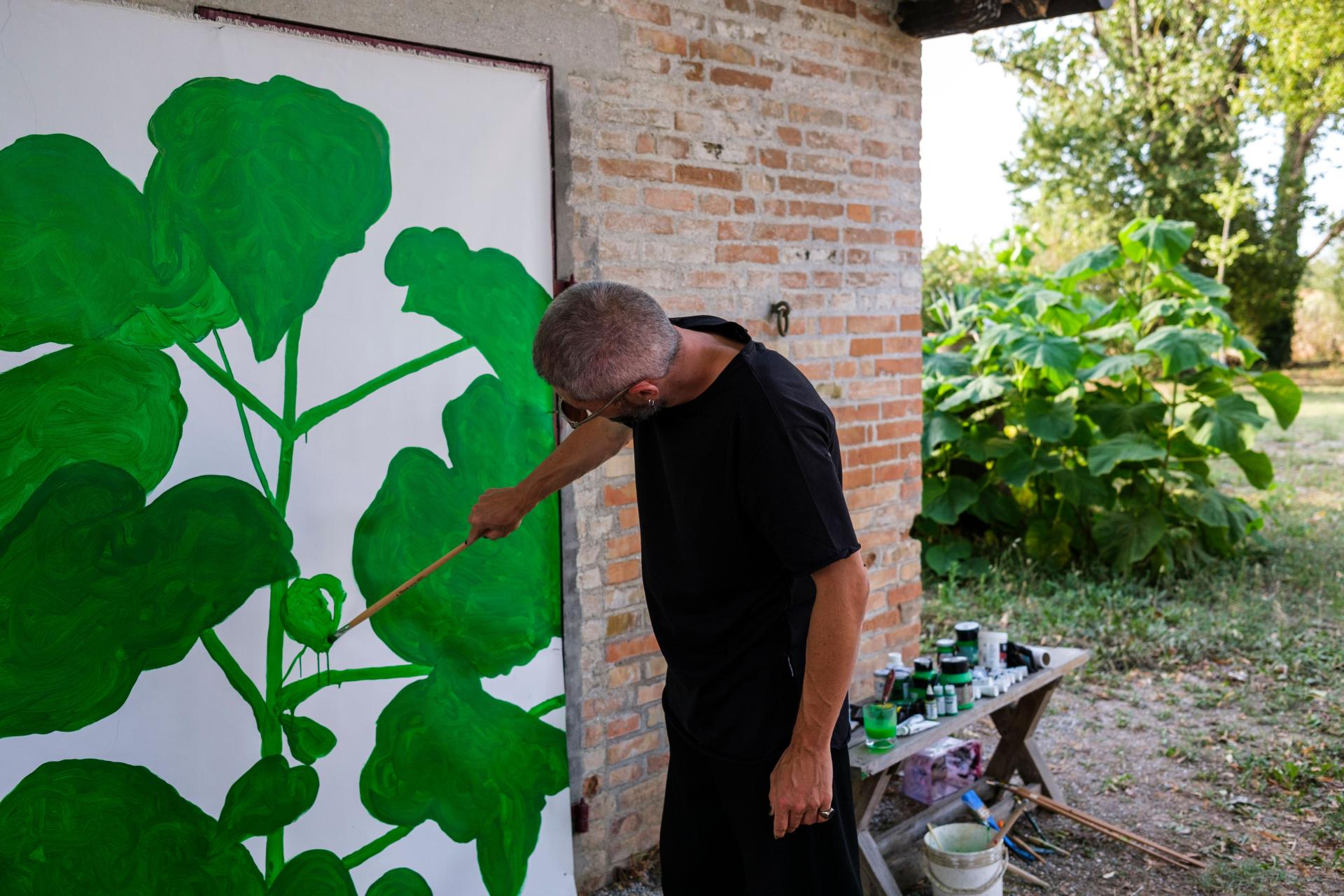Equidistanze | Artistic Residences
Basic information
Project Title
Full project title
Category
Project Description
“Equidistanze | Artistic Residences ” is a residence for artists: a period lived in close contact with the curators of the project, who also live in the same house for the duration of the project, a relevant way for constructing a strong relationship between artists, curators, works and, above all, community. The artists are authors of a continuous transformation, participating in happenings and performances, creating bonds with the local community and the public.
Geographical Scope
Project Region
Urban or rural issues
Physical or other transformations
EU Programme or fund
Which funds
Description of the project
Summary
The project was born during 2020 when Alessandra Carini, gallery founder, decided to host 32 artists in her country house in the months of July and August to support them during a long period of crisis. Everyone is offered board, lodging and basic materials and the opportunity to work together in an environment far from city stress in close contact with nature. Podere Schiavina, a late 18th century farmhouse, with its large spaces, is an ideal place for this type of project. The Equidistanze project was born to sustain artists during a tough period in order to provide the conditions to be able to deepen their researches in a perspective of opening and discussion, in a community and family context in a nonstop transformation and change. It differs from the canonical concept of "residences": it is a one-week period lived in close contact with other artists, collaborators, one historical-artistic technical assistant, the curators of the project and the natural space: a situationist coexistence that can be the starting point for a continuous transformation, an expression of the liberation of vital and creative energies, in close contact with the local community. This type of residence moves beyond the academic experience also, and above all, as a result of what our country, and beyond, has experienced in the last year: the Covid-19 emergency. The macro-theme is focused on everything we have experienced in recent years and are currently experiencing: imprisonment, social and emotional distancing, physical and mental distance, but also gender and racial discrimination, and the latest international political events.
Key objectives for sustainability
Sustainability is a value of the project witnessed in the search for local food products bought from small producers, preference for vegan cuisine (organization of courses using organic products locally grown at zero kilometer) because we firmly believe that respect for all living beings is the key for sustainability, recovery of discarded materials for artistic operations and use of materials found nearby the house, in order to make artworks that live sinergistically with the territories and, least but not last, an extreme attention to recycling and separate waste collection.
Key objectives for aesthetics and quality
The main artistic aim is to bring a rural reality, marginalized and depopulated (also culturally) by economic dynamics in contact with practices, experiences and works of contemporary art. This is done thanks to the meeting and exchange with artists during the residences and in the future throughout the whole year thanks to permanent installations and works that interact with the space and the local community, which integrate into the rural landscape making it beautiful in a contemporary way, restoring a sense of belonging to the local community and a sense of meaning in living a renewed place, lighting a connection between past and present community culture and customs.
Key objectives for inclusion
The main purpose is to redevelop and enhance a rural area, making art accessible to all, transversal and interstitial. This is done through different free activities, planned involving local communities, citizens, institutions, local associations, activities and professionals: cooking lessons with credited teachers, concerts and DJ sets, events inside the homes of citizens, dissemination of artistic heritage, sport lessons, book presentations, skateboard lessons, dinners and aperitifs, live radio broadcasts, theatre performances. For the maximum horizontal inclusion, activities have no entry fee. Attention to gender issues and balance in this respect is extreme. The local community engagement is one of the main goals, for this purpose we arrange meetings with citizens to determine the locations for permanent art installations and involve local performers and commercial activities in the organization of events.
Results in relation to category
In the first two editions 52 artists from all over Italy were hosted and as many personalities from the art world or journalists came to know the artists and create connections. The events attracted 2000 people. The art works completed during the residencies are at least 300, with 10 permanent works installed in the town, including murals and permanent installations. This year we are planning to place works of art in private gardens in agreement with the citizens.
How Citizens benefit
The preliminary inspections were made with the citizens, and the organisation will determine the definitive locations in future meetings with them. Furthermore, the historic bar and restaurant of the town will be involved in events, also combining the presence of local DJs and performers.
Physical or other transformations
Innovative character
Mainstream operations concerning contemporary art often take place in areas, territories and cities already suited for this kind of activity. In particular, for our territory the project is charachterized by a very high degree of innovation, as the experimentation of contemporary artistic practices almost never occurs in rural contexts like this and never has characteristics or objectives of transformation and regeneration of the scope that ours project sets itself.
Learning transferred to other parties
The project can be replicated as a virtuous practice to regenerate other local rural areas that have the same characteristics and problems. It also aims to create, with the works produced during the residencies, collections and exhibitions that can travel around the Romagna area and in local museums, especially in smaller locations.



